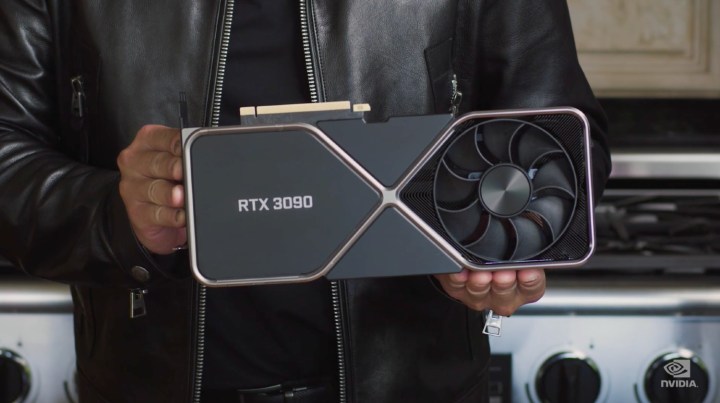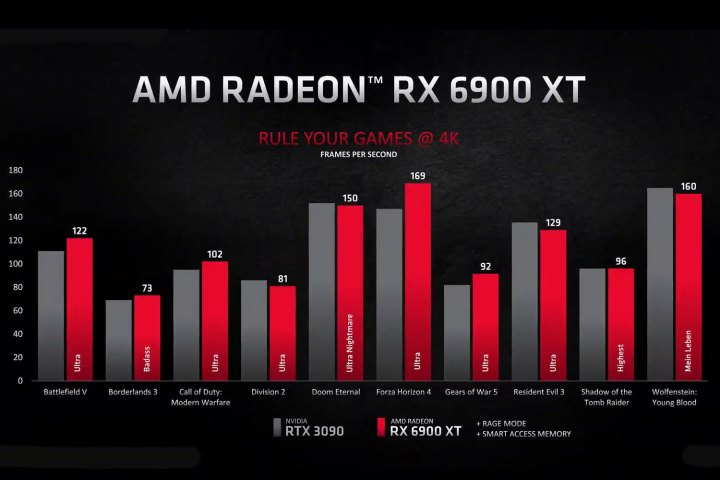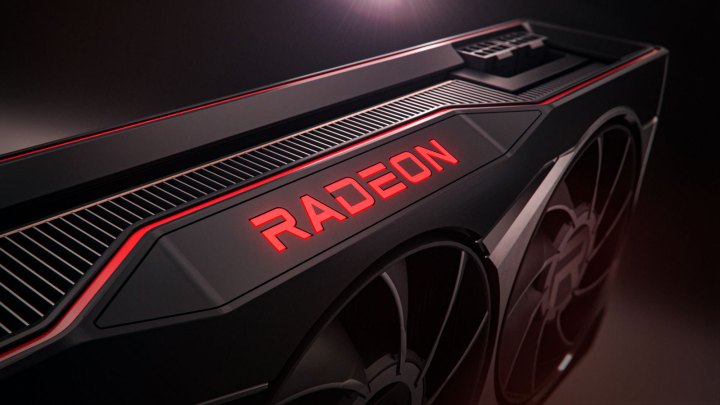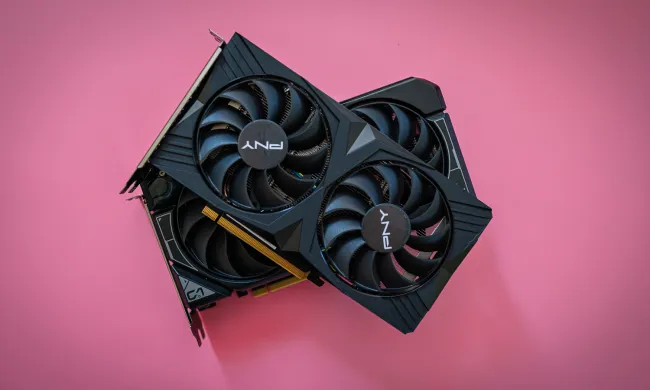If you want the absolute pinnacle of graphics performance, the RX 6900 XT and RTX 3090 have it, and nothing else comes close. They each have more memory and more raw GPU performance than anything either company has made before. As powerful as they are, though, they have big differences in features and price, which could sway you one way or the other.
It’s time for the most epic of showdowns between the contemporary kings of the GPUs. Which will emerge victorious?
Pricing and availability

The Nvidia RTX 3090 debuted on September 1 alongside the RTX 3080 and 3070. Boasting features that will appeal to workstation and professional owners, it was also marketed as a gaming card and offers the greatest performance of the three. Its price tag was even greater, however, sitting at $1,499 on its September 24 launch date.
If you managed to buy it at that price, you were lucky, because stock was abysmal, and price gouging sent its cost rocketing, reaching at least $2,000 on eBay for even the Founders Edition. That’s likely to remain the case until spring 2021, when Nvidia promises big orders it’s made since will be completed.
The RX 6900 XT was announced on October 28 alongside the RX 6800 XT and 6800. Its price was a far more modest $999. It’s set to be available for sale on December 8, and AMD has taken steps to avoid scalping at launch. Whether that makes a difference for a card that is likely to be extremely popular remains to be seen.
Performance
Comparing core counts between AMD and Nvidia GPUs doesn’t provide much useful information due to the different way their architectures work. Although the RX 6900 XT has less than half the stream processors as the RTX 3090 has CUDA cores, that doesn’t mean the 6900 XT is half as quick. Far from it. We can make more useful comparisons in clock speed and memory, however.
| AMD RX 6900 XT | RTX 3090 | |
| GPU | TBD | TBD |
| Interface | PCI Express 4.0 | PCI Express 4.0 |
| GPU Cores | 5,120 Stream processors | 10,496 CUDA cores |
| Ray tracing cores | 80 Ray Accelerators | 82 Gen 2 RT cores |
| Tensor cores | N/A | 328 |
| Base clock | TBD | 1,400MHz |
| Game clock | 2,015MHz | N/A |
| Boost clock | 2,250MHz | 1,695MHz |
| Memory | 16GB GDDR6 | 24GB GDDR6X |
| Memory speed | 16Gbps + 128MB Infinity Cache | 19.5Gbps |
| Memory bus | 256-bit | 384-bit |
| Memory Bandwidth | 512GBps (1,664GBps effective) | 936GBps |
| TDP | 300w | 350w |
In terms of memory capacity, the RTX 3090 rules the roost. Its memory is also faster and enjoys a wider memory bus than the 6900 XT’s, but that’s not the whole story. Thanks to AMD’s new Infinity Cache, it claims the 6900 XT has an effective memory bandwidth of 1,664GBps. That’s almost 1.8 times the memory bandwidth of the RTX 3090, despite its greater quantity and higher speed.
It’s likely that Infinity Cache won’t always offer this kind of uplift, depending on the workload and whether Shared Memory Access utilizes some of the GDDR6 for general system performance — hence AMD’s choice of “effective” wording. Still, it’s an intriguing possibility that the AMD card may offer much greater memory bandwidth in some scenarios.
In-game, AMD claims the RX 6900 XT can match the RTX 3090 in most titles. Its benchmarks show an improvement in Forza Horizon 4 and Battlefield V. Some games run slightly worse on AMD’s hardware, though, including Wolfenstein: Young Blood and The Division 2. Manufacturer benchmarks aren’t usually the most reliable, so we’re remaining skeptical until we see third-party results.

Frames per second don’t tell the full story. The RX 6900 XT is getting some help from Rage Mode — a one-click overclocking utility — and Smart Access Memory in AMD’s benchmarks. Smart Access Memory is a new feature for RX 6000-series cards that allows a Ryzen 5000 CPU and 500-series chipset to utilize the GPU’s ultra-fast GDDR6 memory. According to AMD, using both can offer up to a 13% performance improvement.
AMD didn’t provide benchmarks with these features disabled during its October 28 RX 6000 reveal event. We can guess, though. AMD claimed the cheaper 6900 XT had a 13% performance improvement in Forza Horizon 4 with Rage Mode and Smart Access Memory at 4K. Based on that, we’d expect to see around 150 fps in Forza Horizon 4 with the 6900 XT, not 169 fps.
Smart Access Memory is an interesting feature, but it’s niche. Expect slightly lower performance across the board if you don’t have a Ryzen 5000 CPU and motherboard with a 500-series chipset.
Ray tracing, image sharpening, and more
Nvidia has been the only option in ray tracing and A.I.-driven upscaling for the past few years. With the RX 6900 XT, though, that changes. AMD’s RDNA2 architecture includes its proprietary Ray Accelerator hardware in each compute unit, giving the 6900 XT 80 of them. They work in tandem with Microsoft’s DXR as part of DirectX12 to deliver ray-traced lighting in all existing ray-tracing games, as well as upcoming DXR-driven ray traced games, like Far Cry 6, World of Warcraft: Shadowlands, and Godfall.
Nvidia has pushed hardware-accelerated ray tracing for the past few years, first with RTX 20-series GPUs and now with the RTX 30-series line. The RTX 3090 comes with Nvidia’s new ray-tracing cores, and based on reviews, they help keep frame rates high with
We don’t have any comprehensive head-to-head ray-tracing benchmark results with these cards for now, but early comparisons of AMD’s own numbers and some independent testers suggest that the 6900 XT would likely be noticeably weaker in ray-tracing performance than the RTX 3090. Performance should still be better than Turing GPUs, however.
Our first real-world look at RDNA2 ray tracing performance will be with the Xbox Series X and PS5 — both of which are powered by the same architecture in the RX 6900 XT.
For team green, DLSS has been a talking point, too. Nvidia has made impressive improvements to its A.I.-drive upscaling tech in the last few years, which allowed the RTX 3090 to hit 8K near 60 fps in a range of titles (if you have an 8K display, that is). According to AMD, they have a Super Resolution feature in the making, but until we can confirm that it can match the speeds that hardware demands, we will have to reserve our judgments. For now, DLSS gives Nvidia a distinct performance advantage in supporting games.
Is it time to crown a new king?

It doesn’t seem like the RX 6900 XT will become the best consumer CPU, even though it costs $500 less, so the RTX 3090 is safe on the throne for now. Across games, the RTX 3090 should remain the better-performing card overall, especially when it comes to ray tracing. That said, if the RX 6900 makes a few improvements, it could very well become a formidable competitor to the RTX 3090 because it is so much more affordable.
The Smart Memory Access and Infinity Cache are noteworthy features for the RX 6900 XT. We can’t blame you for remaining faithful to AMD products to maintain optimal compatibility with AMD parts you currently own. It’s also worth sticking with if Nvidia’s stock of its new-generation kingpin remains low.




